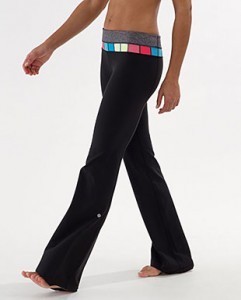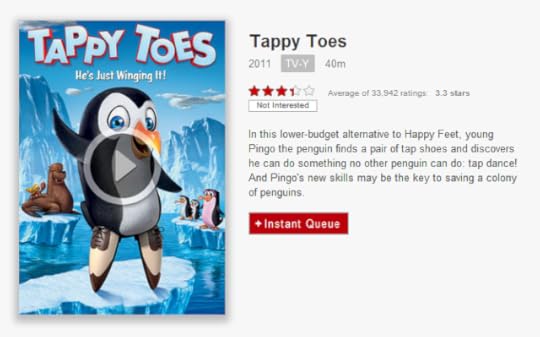Christopher Sprigman's Blog, page 15
August 16, 2012
Patented Pants
 We’ve often noted that fashion designs can be freely copied since they are not covered by American copyright law. Yet on rare occasions, clothing receives patent protection. Design patents are expensive and time-consuming to obtain, so they are usually not worth it for the typical trendy item.
We’ve often noted that fashion designs can be freely copied since they are not covered by American copyright law. Yet on rare occasions, clothing receives patent protection. Design patents are expensive and time-consuming to obtain, so they are usually not worth it for the typical trendy item.
But for athletic clothing, which sometimes has unusual or novel features, and is less likely to cycle in and out of fashion, design patents can make sense.
A case in point is Lululemon yoga pants. Lululemon is suing Calvin Klein, alleging that CK copied aspects of its signature yoga pants. As the Toronto Globe and Mail reports (Lululemon is based in Canada):
The filing singles out Calvin Klein’s knee-length running tights and “compression overlapping waistband pants,” claiming they infringe on a number of patents for Lululemon’s pants designs, which were filed in the U.S. this year and last. Those include the patent for Lululemon’s Astro Pant products.
One of the main design elements that seems to be at issue is the look of the waistband on the Calvin Klein pants, which appears similar to the crossover fabric that is a popular feature of the Lululemon designs.
“The design is incredibly important [to Lululemon’s popularity]. It’s a fit issue, and if you’ve got that tuck-in, overlap feature that makes bodies look good, that’s obviously very important,” said Wendy Evans, a retail consultant and founder of Toronto-based Evans & Co. Consultants Inc.
“Retailers have looked longingly at Lululemon’s results, and increasing sales, and great profitability. And there is a huge increase in pilates and yoga; it’s definitely a growth category, and they’re the stars in it.
“So, very tempting to try and replicate in as close a way as possible.”
August 15, 2012
Mockbusters
Hollywood is very concerned about IP infringement abroad, especially in China, where illegal copies of recent films can be readily found. But by no means is copying limited to China–nor is all film copying illegal.
A great example is the genre of knockoff films. These are sometimes referred to as “drafting” off of the original, in that they benefit from the marketing efforts of a major film. Forbes has a great story on this. Here is what these look like, for the uninitiated. Pretty subtle, right?
August 14, 2012
Meta Remix
Australian singer Gotye has posted a pretty amazing remix of dozens of (surely unauthorized) covers and parodies of his breakout hit “Somebody That I Used To Know”–what he calls a “YouTube Orchestra.” Check it out:
August 13, 2012
A real knockoff economy
As readers of our book know, The Knockoff Economy is about the relationship between creativity and copying, and the fascinating creative worlds that fall outside–for one reason or another–the scope of copyright.
In other words, we are mainly interested in what happens when knockoffs are legal. But of course there is a big world of illegal knockoffs, including counterfeit goods. Just how big that world is a subject of great debate.
Whatever may be true here in North America, it seems clear that in China, there is a lot of fakery going on. In fact, in some places the economy seems to be almost entirely driven by copying.
We’ve mentioned before the complex relationship between copying and originality in China, embodied in the concept of “shanzhai.” We’ll write more about that, but in the meantime, stories like this reinforce the idea that we need to learn more about the meaning, and the practice, of copying in China.
August 11, 2012
No Good Deed Goes Uncopied
The apparel industry is the white-hot center of the knockoff world, and as we’ve discussed before, it is very common and completely legal to knock off most clothing designs.
But the knockoff strategy is not limited to designs. As a recent story on SFGate (written by the improbably-yet-appropriately named Cotten Timberlake) about canvas shoes illustrates, marketing strategies for apparel are not immune to imitation. From the Gate:
Philanthropic fashion lures copycats
Cotten Timberlake
When Blake Mycoskie founded Toms shoes six years ago, his pitch to consumers – buy a pair and a second one will be donated to the needy – helped launch a phenomenon that retail consultants call compassionate consumerism.
Since then it’s been imitated widely by established brands. Inspired by Toms, Skechers USA launched a brand called Bobs, as in Benefiting Others By Shoes. Urban Outfitters stores feature apparel by Threads for Thought, which gives part of its sales proceeds to humanitarian groups…
Skechers’ Bobs shoe line is similar to Toms’ Argentine-style canvas espadrilles, and it’s “kind of in poor taste to knock off,” says , an analyst with .
Skechers upped the ante on Toms by initially donating two pairs for every one it sells. Bobs also are slightly cheaper, starting at $38 compared with $44 for a pair of Toms. Skechers recruited “Dancing with the Stars” winner to promote Bobs in television commercials and says it has donated more than 1 million pairs in just over a year…
Skechers President makes no apologies for launching his own charity line. “Companies that have the means should do what they can to make a difference, and it’s beneficial for multiple footwear brands to join this cause to make an even bigger impact,” he wrote.




